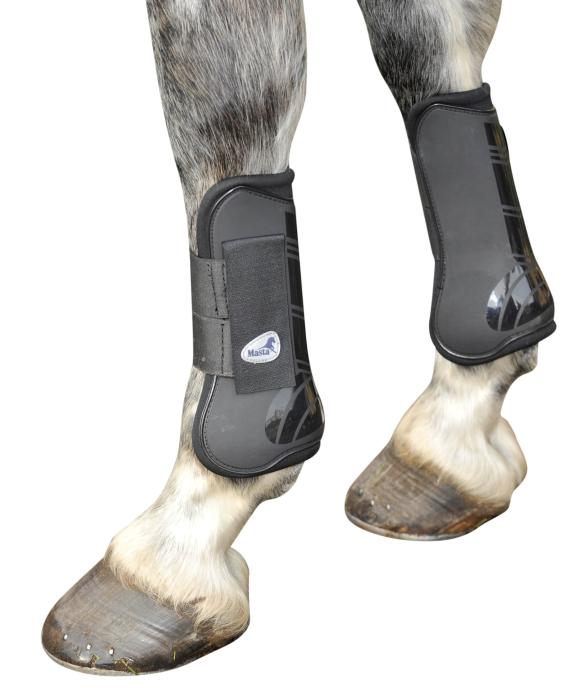

Protecting your horse’s tendons is so important. Without doing so, your horse can be susceptible to different degrees of tendon damage depending on the strain of work your horse does day-to-day. Signs of tendon damage can vary depending on the severity of the damage. In mild cases, sometimes there is no sign of injury other than a subtle swelling around the tendon. While in the more extreme cases, a horse with tendon damage can be severely lame, with a large amount of swelling around the tendon.
The threat of a tendon injury can easily be avoided by using tendon boots whenever you feel your horse is at risk of damage – mainly if your horse is involved in jumping or fast paced work.
Worn on the horse’s front legs, tendon boots are designed to employ a tendon guard, which is shaped around the back and sides of the front legs to ensure that both the superficial digital flexor tendon and suspensory ligament are kept safe and protected from being struck by the hind legs. Synthetic tendon boots are designed to be both easy to place on your horse as well as remove, as they are fastened with several Velcro straps around the front of the leg – though some fastening designs may differ. Leather tendon boots are more likely to fasten via straps and buckles.
Different designs of the boot serve different purposes, resulting in there being boots that can either be open or closed at the front of the leg. An open fronted tendon boot is more likely to be used for show jumping as they offer much more protection down the back of the leg, as well as encourage the horse to pick up their front feet due to the openness at the front of the boot. Some products also offer shock absorption, which is ideal for showjumping. A closed fronted tendon boot should be used for cross-country, as in this discipline horses aren’t just at risk of a tendon injury, but the front of the forelegs legs are also at risk of an injury from the solid fences.
It’s important that when purchasing tendon boots, you make sure that the boot accommodates a soft lining which will prevent your horse from gaining any sores from rubbing. Most tendon boots on the market do facilitate this and are designed to incorporate a fleece or sheepskin lining to allow for extra comfort. Often these linings removable for easy cleaning, as it is inevitable for tendon boots to get dirty, so it’s essential that they are cleaned on a regular basis.









